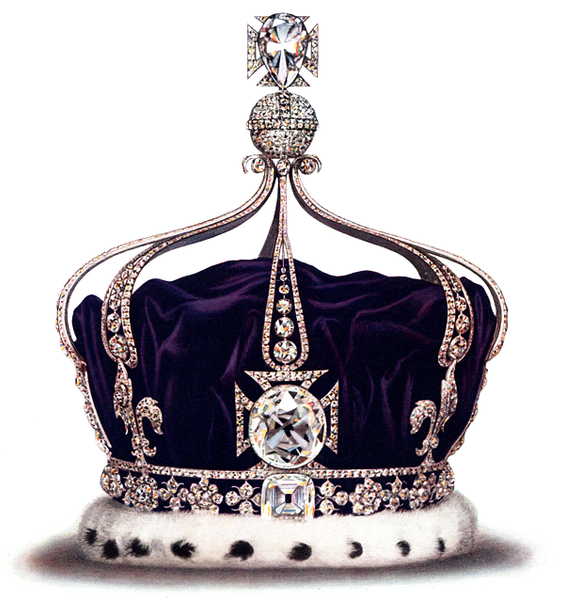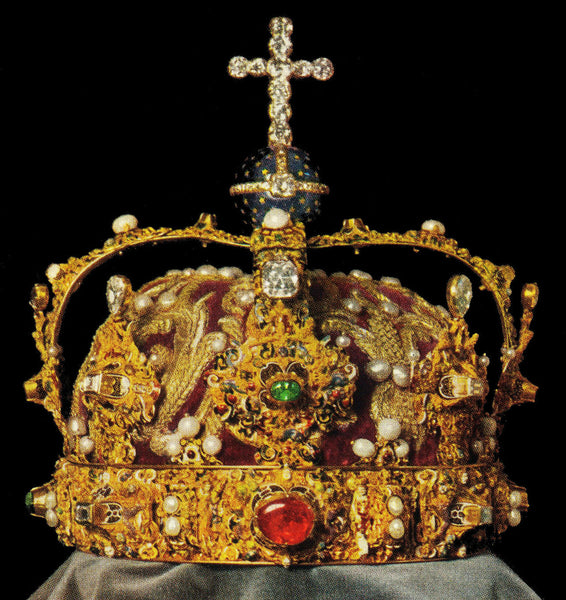Crowning Achievements: Vintage Royal Jewelry Through the Ages
In the grand tapestry of history, royal jewelry has always played a pivotal role, reflecting the opulence, power, and rich cultural heritage of monarchies. Each piece, from tiaras to necklaces, tells a story of regal splendor and holds within its precious stones a legacy that spans generations. Join us as we embark on a journey through the ages to explore the crowning achievements of vintage royal jewelry, where gemstones and metals become symbols of dynasties and the grandeur of royal courts.
The Crown Jewels of England: A Symbol of Sovereignty
The Crown Jewels of England, housed in the Tower of London, stand as a testament to centuries of royal history. Dating back to the coronation of William the Conqueror in 1066, these regal treasures include the Imperial State Crown, the Sovereign's Sceptre, and the famous Koh-i-Noor diamond. Each gem, passed down through generations, signifies the continuity of the monarchy and the sovereign's divine right to rule.

Above: The Koh-i-Noor diamond in the front cross of Queen Mary's Crown.
The French Crown Jewels: Elegance and Extravagance
The French Crown Jewels, a collection of opulent regalia, once adorned the heads and necks of French monarchs. The crowning glory was the Crown of Louis XV, encrusted with diamonds, rubies, sapphires, and emeralds. Unfortunately, many of these treasures were dispersed or lost during the French Revolution, but their memory lingers as a testament to the extravagance of the Bourbon dynasty.
The Romanov Jewels: Imperial Splendor of the Russian Empire
The Romanovs, rulers of the Russian Empire, possessed a dazzling array of jewels that reflected their imperial status. The Imperial Crown of Russia, set with nearly 5,000 diamonds, pearls, and a colossal spinel, epitomizes the grandeur of the Romanov era. The Fabergé eggs, exquisite works of art encrusted with gems, also stand as iconic symbols of imperial splendor.
The Spanish Royal Collection: A Treasure Trove of Heritage
The Spanish Royal Collection boasts an array of historic jewels, including tiaras, necklaces, and regal ornaments. The Spanish Crown, adorned with pearls and diamonds, represents the continuity of the monarchy. The Fleur-de-Lys Tiara, with its intricate design, serves as a reminder of Spain's royal legacy and cultural heritage.

Above: The Fleur-de-Lys Tiara, L-R: Queen Victoria Euginie, Princess Maria, Queen Sophia, Queen Letizia.
The Imperial Crown of Austria: Jeweled Symbol of Habsburg Rule
The Imperial Crown of Austria, a masterpiece of craftsmanship, is adorned with sapphires, emeralds, rubies, and pearls. Worn by Holy Roman Emperors, the crown symbolized the might of the Habsburg dynasty. This vintage royal jewel, with its intricate design, encapsulates the history and prestige of the Austrian Empire.
The Swedish Royal Regalia: Nordic Elegance
The Swedish Royal Regalia, including the Crown of Eric XIV and the Sword of State, showcase Nordic elegance and craftsmanship. The Swedish monarchs have adorned themselves with crowns featuring intricate goldwork and precious gemstones, embodying the nation's regal history and traditions.

Above: The crown of King Eric XIV
Vintage royal jewelry serves as a living testament to the grandeur and legacies of monarchies throughout history. From the glittering Crown Jewels of England to the opulence of the Russian Imperial Crown, each piece carries the weight of centuries, embodying the cultural, political, and artistic expressions of the era it represents. As we marvel at these crowning achievements, we are transported back in time, where jewels were not just accessories but symbols of power, sovereignty, and the enduring legacy of royal dynasties.




